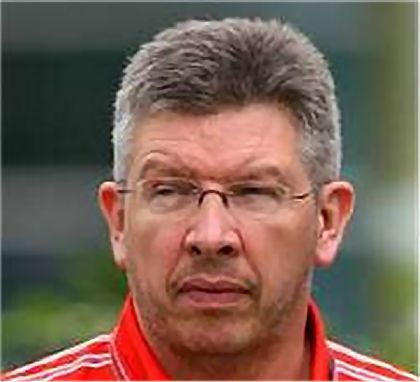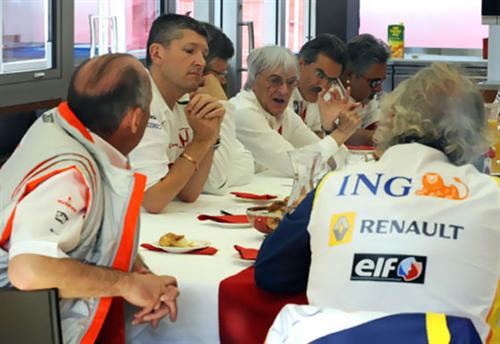
Teams can invest small fortunes (actually, make that very large fortunes) in developing race car technology, and drivers can be as brilliant as they like, but when it comes down to it, a car’s tyres are what actually keeps it moving on the track. So, as you might expect, development has crept into tyre design too! The teams are given a choice of two compounds of dry weather tyres from their supplier. The compound refers to the constituent mix of rubber and chemicals of the tyre. The compound choice will usually be between:
- One that is more consistent and tougher-wearing
- One that is made from a grippier chemical/rubber mix and therefore usually faster at its peak A team will prefer to be able to use the softer, initially grippier tyre but sometimes they are prevented from doing so if they cannot attune the car sufficiently so that the tyre’s wear rate is kept in check. In this case they will be forced to choose the harder compound.
The teams have to choose their dry weather compound before going out to qualify. They are stuck with that choice for the rest of the weekend, so a bit of forward planning is important. What compound they choose depends on the following:
- The practice laps: The practices give the teams some indication of the wear rates and lap time capability of each tyre, enabling them to trade off one quality against the other in their calculations.
- Info from the tyre manufacturers: The tyre manufacturers advise the teams after studying the practice data. This will include looking at the tyres’ lap time drop off, the difference in performance at its peak and just before the pit stop. At some circuits, there is virtually no drop-off –meaning that the tyre is still at a peak performance level when the fuel stop is made. At others, notably circuits like Suzuka in Japan that have lots of long duration turns, it is a significant factor.
- The pit stop strategy: The choice of tyre compound is also linked to the pit stop strategy. If you go for a one-stop strategy, the extra fuel weight may destroy the softer, more delicate compound and force you to opt for the harder, slower, choice.
- The driver’s skill: Much depends upon the sensitivity and control of the driver. If he can “nurse” the car through the early stages when the car’s weight is high, he may be able to make even the softer tyre “live” and therefore get the benefit of its extra grip as the fuel load comes down. You hardly ever know before the race what tyre and pit stop strategy a driver has chosen, as obviously this is information that could be used to advantage by his rivals and is therefore kept close to the team’s chest. You can always try asking if you get close enough, but they might lie.


